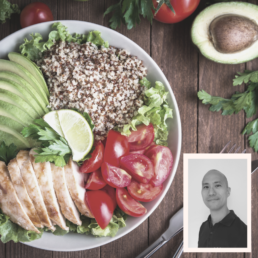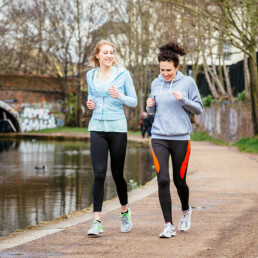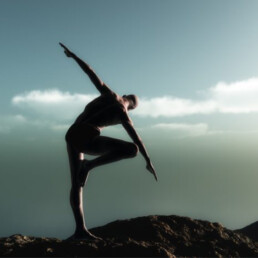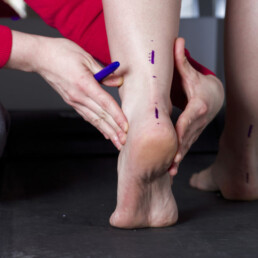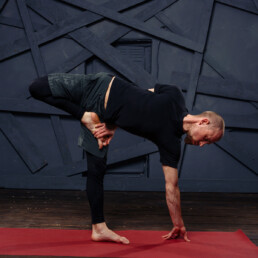It’s time to think about MOVEMENT and not just exercise!

I always look at how modern life can be so ironic! For all of us living through the current world wide technological revolution, our pace of life and productivity seem to only be continually increasing. But in spite of our huge rises in daily productivity, the necessity to use our bodies for the purposes of that productivity are becoming significantly redundant. Our increasingly sedentary lifestyles are setting us up for a host of future health problems such as obesity, heart disease, postural issues, chronic pain, anxiety and depression to name a few.

Most of our sedentary behaviours are normalised and go unnoticed such as driving the car to run errands, taking a short bus ride to work, ordering food online, sitting at the computer or watching TV. Some of us combat this with exercise and think that if we do our daily exercise session for an hour everyday, then we are fit and healthy. I hear this a lot from people I speak to. Current research has shown that sitting for two hours consecutively can significantly affect how responsive our muscles are to processing sugar and it can also negatively interfere with the fat burning capability of your muscles as well. Now whilst exercising for an hour everyday may make some steps towards reversing the negative effects of prolonged sitting, research is showing that exercising for only an hour everyday is not enough! The long term solution seems to be more along the lines of moving more often, and at varying intensities. There are studies which are showing that our long term health may be better served with three shorter walks per day (around ten minutes in length) as opposed to taking a long thirty minute walk once a day.

In these current times, many of us share the mindset of trying to maximise the efficiency and effectiveness of everything that we do. The result is our increasing participation of faster, more stressful bouts of exercise, so we can quickly get back to our hectic lives of over working. It also results in not prioritising vital restorative activities such as mental recuperation or sleep, and constantly being on the move in order to complete our never ending list of things to do. This mindset is also apparent in our ever changing technology and variety of gadgets which satisfy most of our needs instantly. We are used to quick fixes, fast results and our lives made easier and more comfortable.
Not so long ago we used to move in nature and not gyms. We used to move to find food in order to survive. We would interact with our environment and move naturally with our whole body using a blend of movement elements such as mobility, flexibility, strength, conditioning, speed, balance and coordination, to best navigate any obstacles thrown our way. We were completely connected to movement and our natural environment, without ever engaging within the mindset of exercise, burning calories or toning our muscles for aesthetics. Our bodies still have this innate need to move today.

What I’ve come to learn through my own movement journey over the years is that all exercise is movement, but not all movement is exercise. I invite you to look at what non-exercise movements you choose to do in your daily life, for example, playing with your children on the floor, choosing to take the stairs rather than the escalator, walking somewhere rather than driving. There’s so many opportunities for movement in our daily lives, even the littlest bouts count. Current evidence shows that the total volume of moderate-to-vigorous physical activity is related to many health benefits; bouts of a prescribed duration are not essential. So choosing movement adds up, it all matters.

I would love to help you live a more movement rich lifestyle and recognise any sedentary patterns and behaviours that could be altered to bring more movement into your life with minimum effort for maximum benefit.
A few ideas on how you can introduce more movement into your day for better health and wellbeing!
- Play with your children and/or animal friends.
- Add movement into your commute. If taking public transport walk to the farthest stop before getting on, or get off a stop early to walk the remaining distance. If driving, park at a spot further away.
- Opt to take the stairs over lifts or escalators
- When food shopping, park further away or don’t drive at all, walk or bike instead. Carry bags, load/unload shopping bags.
- Carrying laundry up or downstairs (walking whilst carrying load).
- Gardening (move around deep squats, kneeling, on all fours)
Kirsty is the resident Sports Therapist and one of the specialist movement experts here at Evolution Rehab. If you are interested in finding out some advise about how to squeeze more movement into your life, or find out about our Healthy Movers Program, feel free to contact Kirsty at evorehab@gmail.com. Better still, why not book a consultation with Kirsty directly via our website (evolutionrehab.com) and take those steps to moving better, feeling healthier and having more energy back into your life again.
![]()
Nutrition....a return to trusting yourself.....

When the World Wide Web was popularised in the early 90s, there were many who thought the invention of the internet, as we recognise it today, would help to level the intellectual playing field and bring a greater level of equality amongst the different educational classes within society.
Fast forward four decades, and the reality is quite different. Especially in the domain of diet and nutrition. We are now suffering from an abundance of too much information, and our confusion lies within trying to navigate between what is true and what is not. Couple this confusion with a workforce which is pushed into ever increasing working hours, we are left with little time to be able to engage within essential household tasks such as cooking, and instead, we reach for pre-prepared and processed foods which provide us a simple, time saving alternative for sustenance. Unfortunately, the cost of this has resulted in a western society overwhelmed with obesity, heart disease, diabetes and cancer. In the UK alone, one in five of us are now considered obese and nearly that same ratio of us will at some point become a victim of cancer as well!

If you ask anyone on the street what foods you think we should eat to keep us healthy, most people will answer along similar lines of eating fruit, vegetables, lean meat and some sort of whole grains. Unfortunately, what really muddies the waters, is that the manner and the way in which the food that we eat is prepared matters just as much as what you eat. For example, so many of us are fooled into thinking that pre-prepared smoothies from the supermarket are a quick fix for getting lots of healthy nutrients into our bodies, but little do we realise that those same smoothies also inject a considerably large amount of sugar into us; and because all of the fibre of the fruit within the smoothie drink has been broken down via the blending process, there is nothing to slow down the absorption of the sugar into our systems. Consume the same smoothie on a regular basis (even as little as three times per week) and the negative impact upon your body can be significant in terms of chronic disease risk in the future.

We are also bombarded by the media and magazines with continually conflicting information about how to eat, what to eat and when to eat it. The contradictions are insane! The constant influx of different information seems to have us running around like headless chickens chasing the latest fad diet to help keep our waistlines down. The confusion is further re-enforced because different friends of ours may swear to the health benefits of completely conflicting dietary habits and we end up at at loss of where to begin.
Having spent the last twenty years studying, investigating and learning about nutrition, I myself have been subject to the same perils, pitfalls, debates and discussions about what we should be eating. I remember being shocked by the approach and the popularity of the Atkins diet back during the turn of the century. The concept of a low carbohydrate diet was something that was so diametrically opposed to the nutritional education that had been taught to me as a lifestyle, fitness and movement professional.
Twenty years on, a multitude of educational courses in nutrition and several hundred books later, the main lesson that I have learnt is that there is no single diet which is perfect for absolutely everyone! As we all emotionally identify ourselves as individuals, we should also show each other respect to the fact that variances do exist between what our bodies can tolerate, in terms of diet. I guess one of the main lessons that I am wanting to spread to you all, is a return to trusting yourselves again and finding out what things in relation to nutrition work for you! It is important to realise that the bodily signs and signals that we should be learning to reconnect with, should be more than simply a reducing waistline. It should also be things like, how you feel immediately after eating a meal? Do you have large dips in energy throughout the day? What does your skin feel like and does it over react to scratches?

Now whilst I am recommending a return to a journey of dietary self exploration and discovery, don’t think I am going to set you on your way without a map to at least point you in the right direction. During my years into nutritional research, there a few commonalities of healthy eating which I have found amongst all good dietary advise that I have been priviledged to learn over the years:
- Don’t eat processed foods. Many pre-prepared and processed foods are heavily laden with sugar, processed salt, artificial sweeteners and chemical additives. Whilst we know the long term effects of consuming too much refined sugar, there is still a large amount of doubt and uncertainty as to the effect of what artificial chemicals and sweeteners really have on our bodies. Also, with many processed foods, we still don’t really know what they actually put into them. In one study of the bread from the fast food restaurant, Subway, they found trace amounts of the same chemicals that you would find in a cigarette!
- Eat whole, fresh foods. Evolutionary biologists have generally accepted that the ability of humans to be able to positively adapt to be able to eat certain types of foods can take anything from 50,000 to 100,000 years. Many of the common food types found in processed foods, such as wheat, were only really introduced into our diet around 10,000-13,000 years ago. This means that there are still many of us who may not be able to properly tolerate the regular consumption of grains and cereals. This could also be said of a whole host of other processed foods types! To avoid the problem of knowing what to eat, it is generally advised to base your diet upon a large ratio of foods that you can recognise in their natural form.
- Not all calories are equal! In the drive for the health industry to provide a simple, easily taught process on how much food we should be eating, the oversimplification of food consumption down to the equation of calories in versus calories out has caused alarming consequences for our health. Can you really tell me that having a hundred calories from eating a pack of Oreos has the same effect on your body as eating one hundred calories of spinach? Think about it. Since the 1980s, from when the practice of calorie counting had been popularised, are we really healthier as a society? With numbers of people in society suffering with obesity, diabetes and heart disease rising year upon year, I think the practice of simply calorie counting within our diets needs to be readdressed!
At Evolution Rehab, with any sort of change, we always advise for you to start simply and apply our recommedations on a step by step basis. Try these basic principles first and, if you are looking for any additional information on books to read to help you on your nutritional journey, please feel free to drop us an email (evorehab@gmail.com) and one of our team will be more than happy to send you our favourite reading lists on nutrition. Alternatively, if you want to go one step further and schedule a nutritional consultation, drop us an email and we will be happy to book something in for you.
Raymond is the principle of our clinic and alongside many other members of our team, he is more than capable of providing you a nutritional consultation if you feel that you may need a little more guidance and advice.
![]()
![]()
![]()
Sleep.......the overlooked factor.

Growing up as a young child off the coast of Mallorca, I was always taught the value of having a good work ethic and not shying away from an honest day of hard work. As a university student living in London, those values stuck with me and became a founding part of my identity that I wanted to carry through into my professional working life.
In the hustle and bustle of London living, the ethics and actions of working hard are considered a worthy badge of honour amongst our peers and professional colleagues. Alongside the ethics of hard work that many institutions try to cultivate, there are a host of accompanying, unwritten working behaviours which are all thought to result in better work productivity. Behaviours such as doing longer working hours, skipping lunch so that you can do more work, having several high strength coffees in the morning to give you that little boost before you get into the office and CUTTING DOWN ON YOUR SLEEP TO ALLOW FOR MORE TIME TO GET WORK DONE!
For so many of us, sleep is something we feel duty bound to do on a daily basis (mainly due to how we feel when we don’t get enough of it!) but it is not something that many of us value to the same degree as having a good diet or being physically fit. In reality, in order to achieve better work performance, greater creativity, continue to develop our intellect and improve performances on the pitch or in the gym; sleep is one of the vital common lifestyle factors that allows our brains and body to properly recover in order for us to be able to achieve our goals and move beyond them.

From the middle of the 1960s, sleep has been something that has been progressively pushed to the back of the line in terms of importance within our daily lives. On average, we now sleep around 25% less (up to 2 hours) than our counterparts 60 years ago. I myself have been guilty of this in the past! During the first few years of my osteopathic degree, I was often sacrificing my precious sleep time in order to get some extra study done, squeeze in a little bit of surplus training or watch another episode on Netflix! Whilst I thought I was making the most of what life had to offer, during those early years, I had regularly suffered with intermittent episodes of dizziness, some strange periods of unexplained pain and occasional difficulty in remembering information. Upon reflection, all of these bizarre symptoms had been due to repetitive sleep restriction.

Not only can repetitive sleep restriction effect the function of your mind in terms of creativity, memory retention and work productivity, but it can also affect your physical performance, your ability to recover from training and even your ability to lose body fat. This was apparent with one of my patients, whom I managed to help drop a kilogram of body weight in only a week, simply by getting her to improve some of her sleep habits!
Ask any athlete at the top of their profession how much they value their sleep and all of them from Cristiano Ronaldo to Serena Williams, will tell you that disrupting their habit of sleep is a golden rule never to be broken.

From my study and research into the field of sleep, I realised that creating the daily habits of good sleep hygiene is a skill which needs to be trained. And, once I managed to establish those habits, I feel incredible and have never looked back since!
So to get you going on your journey to a life of more energy, better performance and inspiring creativity; here are a few sleep tips to send you on your way. Please remember, that learning to implement the following tips is a skill like any other, and there may always be bumps along the way!
So here are my top three tips for getting some better sleep:
- Go to bed and wake up at the same time everyday. Our bodies actually run like clocks and the healthy functioning of our bodies are highly dependant upon the daily rhythms of our hormonal, immunological, digestive, organ and neurological systems. The term for the cyclical nature for how our bodies function is called our “Circadian Rhythm.” Being systematic with our sleeping routines help to keep our circadian rhythm running efficiently and smoothly.
- Have a technology and screen curfew for at least 60-90 minutes before going to sleep, and ideally keep these objects out of the bedroom. I know this can be a difficult task. However, try to fill these last two hours of the day with something your truly enjoy, like reading a book or socialising with friends or a partner. The idea is to substitute your screen time for something you find enjoyable, but which doesn’t keep your body alert and awake.
- Keep your bedroom pitch black and cool. Keeping a cool bedroom can help your body realise that it is time for bed; the ideal sleeping temperature is 18.5 degrees centigrade. The room should also be extremely dark. The room should be so dark, in fact, that it is difficult to see your hand in front of your face when the lights have been turned off. Remember that darkness symbolises bedtime, and that regularly creating this association can be helpful in training your body to know when it is time to get some rest.
If you can relate to any of the problems mentioned above or you need more guidance to help you get a better night’s sleep please feel free to contact our sleep specialist, Yannick, via email at evorehab@gmail.com. Or better still, you can book online (www.evolutionrehab.com) for a remote sleep consultation with Yannick to help you achieve that perfect night’s sleep.
MOVEMENT FOR LIFE, NOT.........JUST FOR CALORIES (PART 2)
MOVEMENT FOR LIFE, NOT......... JUST FOR CALORIES!!! (PART 1)
The necessity of movement is an essential part of being human! Whilst many of the great minds of our time put forward that being human involves a variety of concepts such as imagination, empathy and intellectual consciousness, I would place the concept of movement as an equally integral part of existing as a human being. Within so many aspects of life, without the ability to move we become completely senile in our efforts to enact our thoughts in order to make them become a reality.
Read more
SUPPLEMENTS FOR HEALTHY LIVING?
At Evolution Rehab, one of the defining missions that we try to impress onto our patients is upon the education and understanding of the fundamental principles for sustainable, practical and healthy lifestyles within modern living.

We provide this foundation for healthy living through a baseline understanding and balance of the five key health factors which can determine our health. The five health factors being:
Read more
A WEEK IN THE LIFE OF ANATOMY IN MOTION
Autumn, the second week of September and I’m sitting on the tube crossing over to north west London to immerse myself within the Anatomy in Motion concepts presented by Gary Ward and Chris Sritharan. Having read Gary’s book (“What the Foot?”) over a year prior to the course, I was curious to learn more about Gary’s unique take upon human movement and gait (the study of walking). Guided by Gary’s five big rules of movement and his book, I was ready to take on his six day course and venture out of my comfort zones!
I was not dissapointed! Right from day one, we were taken through a week of both understanding and learning a comprehensive map of the human body which detailed the actions of every joint in the body as it moves through the six phases of gait; STRIKE, SUSPENSION, TRANSITION, SHIFT, PROPULSION & SWING. Using the map as a guide, we were then shown how every joint in the body is affected and moved in all directions during each phase of the gait cycle. We were also provided with a detailed education upon foot mechanics as it happens when the foot hits the ground up to the point upon when it leaves the ground to take another step forward. Through this detailed exploration, we were able to identify how missing links of movement found within the different phases of gait coupled with possible pain and movement dysfunction in the body. It was amazing to physically see how a problem with someone’s foot could be the cause of their chronic neck pain, or how their long standing wrist injury can affect the mechanics of their knee. The detailed map created by Gary made it possible to link these movement dots together.
The solution to fixing the movement dysfunction was a demonstration of genius in simplicity of the highest order! It resulted in giving back the pieces of the gait cycle that the individual is missing. Hence, through engaging in a variety of gait related exercises one is able to either structurally or neurologically restore the movement dysfunction and as Gary would say, “Bring the individual back to centre!”
The premise of the course was equally enlightening as I now possessed a medium of healing that is accessible to nearly all of my patients and one that will continue to heal them with every step that they take! Of course, Anatomy in motion and Gary’s movement concepts represents so much more than the not so simple task of beautiful, efficient gait but if I can help all of my patients walk better and bring them “Back to centre”, I feel that would be an extremely good position to start their journey back to movement health!
Problems with your feet or walking in general? Please feel free to get in touch with any queries.
FUNCTIONAL RANGE CONDITIONING
Both myself, Erkan (of Evolution Rehab) and our friend Keshava Raghuveer have just had the pleasure of taking part in a very enjoyable and comprehensive Functional Range Conditioning (FRC) seminar taught by Andreo Spina and Dewey Nielsen.
The course involved 2 days of a detailed evidence based interpretation of a form of “Mobility Training” whereby to just call it as such, really doesn’t do justice to the value of the system or the material that had been taught! Here is my interpretation following the 2 day course:
In an environment whereby the nature of many current movement based seminar courses being taught today provide training/rehabilitation strategies involving increasing complexity and global body movements, FRC brings movement training back to a more simple yet fundamentally important concept. The underlying principle behind FRC asks the question of whether an individual possesses complete articular control of the joints in their body.
Andreo then proceeds to spend the following 2 days of the course providing a scientific and practical explanation of what complete articular control essentially means. Within the course, you discover that the health of the joints in your body (and their related tissues) is multifaceted and involves so much more than a question of gross strength, simple flexibility or good ranges of movement. It also involves the ability for your neuromuscular system to have the capacity to volitionally move through, hold and control your joints at their various end ranges of motion.
If ,during the course, you discover that you don’t have the desired range and control within a particular joint in your body (believe me you will find many!!!!), Andreo then teaches you a systematic method to not only restore the inadequate joint range and neuromuscular control, but he also shows you how to, over time, safely condition your joints (and their related tissues) to be able to resist and handle forces at those end ranges of movement. So, if god forbid, you do ever roll onto the edge of your ankle whilst running, the tissues in your ankle will be more resilient to mitigating against potential damage to the joint and its related tissues.
The key point here that any individual should really take note of, is the phrase “Over time!” In a multimedia world of youtube and vimeo, too many people have been sucked into the glamour of feats of breathtaking performance and fancy moves, without any consideration towards the amount of hard work and effort that was required to achieve the movement in the first place. Through scientific explanation Andreo underlines the reality that in order to affect positive, long lasting mobility and tissue adaptation in your body, the process of change requires repetition of the stimulus and good quality work over a period of time that is long enough for the body to be able to physiologically enact changes in the tissues themselves.
“IN ORDER TO GAIN ARTICULAR INTER-DEPENDANCE, ONE MUST FIRST ACQUIRE SUFFICIENT ARTICULAR INDEPENDENCE.”
Another concept brought to the fore in the FRC process is the injury risk that pertains to performing repetitive multi-joint actions without prior acquisition of articular control of the joints involved within the movement tasks. The premise is simple, if one of the joints within a multi-joint action lacks the requisite range and control required for the task, the force demands of that task are passed onto another joint along the movement chain. This is something that may not be particularly desirable as the joints upon which the resultant forces are directed towards may not be structurally suited to handling them.
As a system of learning, FRC is a concept which I both enjoyed and respected as it wasn’t based upon learning a specific method of training but more about understanding a principle. And it is with the principles of FRC that I am able to seamlessly slot the principles into any strength conditioning or rehabilitation program that I provide for my patients.
To paraphrase Mr Spina himself, the goal of FRC is to, “JUST MAKE STUFF WORK NICE!” and if you make all the joints in your body work nice, you have a pretty solid foundation for both maintaining and continuing your movement health.
TENNIS PREPARATION?
For those of you keen followers of Tennis, the first rays of sunshine brings about a return to the outdoor tennis courts and an increase to the amount of time spent refining your ground strokes, serves and volleys. I’m sure with Andy Murray’s recent success in Madrid, this will only serve to intensify your determination and vigor to better yourself on the court!
With an increase in activity on the courts, so does the potential risk for all the aches, pains and niggles that can commonly accompany the added time spent honing your tennis skills. Injuries such as tennis elbow (lateral epicondylitis), shoulder impingement (subacromial impingement), low back pain and jumpers knee (patella tendinopathy), are but a few of the potential ailments that could get in the way of meanful skill progression on the courts.
With any sort of sporting endeavour the first premise that you should always adhere to is that you need to get yourself “Fit to play sport, NOT try to play sport to get fit!” What do we mean by this? Along with the obvious prerequisites of muscular strength and cardiovascular fitness required to play tennis, the other physical requirements you should be asking yourself are:
“Do I possess the necessary level of mobility and control through all of the joints of my body to help ensure that I can safely execute the movements required of me on court?”
One simple example of this is that many people who play tennis do not possess the required level of mobility in their shoulders to be able to hold their arms in a straight line directly above their heads, with their elbows locked straight. When assessing from the side to see if an individual possesses the necessary shoulder range of motion, their biceps should at least be covering their ears or behind their ears. If not, the player is at risk for potential shoulder injury or injury in another part of their body which may have to compensate due to the lack of shoulder mobility. Unfortunately, a good range of shoulder flexibility alone is not enough to ensure that the shoulder is more adapted and resilient to the rigors of swinging a tennis racket. A resilient shoulder with good mobility means that it has to be able to have a good range of movement for the sport of tennis, along with a good level of neuromuscular control which allows the individual to be able to develop and grade forces through their shoulders in multiple directions, particularly in the extreme end range positions. A good test of this mobility would be to stand in good posture whilst trying to balance a swiss ball over your head with a straight arm (elbow locked!) and open palm. Whilst this may not be viewed by many as a particularly functional exercise, it is a good test of whether an individual can develop and responsively grade force development in multiple directions in a position of extreme shoulder flexion. If you wanted to turn this into a strength exercise, try performing this with a swiss ball which has also been filled with a couple of liters of water! By the way, if you try this exercise and you feel compression in your low back, this is a possible indication that you may not have a good level of shoulder mobility!
Another question that could be asked is, “Do I possess the necessary level of postural awareness, balance, coordination, control and timing to be able to safely execute techniques on the tennis court?”
While many of you may be thinking that spending time on the court will sort these problems out, in a way, you are correct. But, in a way, you could also predispose yourself to possible injury if you’ve not grasped the fundamental movement behaviours required to perform many tennis techniques. For example, one of the fundamental movement behaviours is called Vertical Force Management. This is the ability for an individual to be able to accept load through their feet, collectively share the force load through the lower body spring that is their pelvis, hips, knees and ankles and redirect the force into a direction useful to the individual. If there is a breakdown in the load sharing process, the force can be focused into certain parts of the spring such as the knees or ankles. Hence, if the force is focused into the knees or ankles repetitively, breakdown of those parts of the spring could eventually occur. A few common injuries resulting from this could be achillies tendinopathy or patella tendinopathy. Sound familiar?
The following few questions and discussion do not serve to act as a dissuading influence to throw your racket to one side and stop playing tennis. Being a movement chauvinist, I greatly encourage you to happily and fully engage within your tennis pursuits. What I hope to achieve is to sow a few seeds of thought to undertake a simple process of self assessment which will encourage you to take the right steps to help better prepare your body for the rigors of tennis and sport in general. Here at Evolution Rehab we are fully equipped to help you with that assessment process. Please feel free to ring or email us if you have any questions and we will be able to guide you in the right direction.

